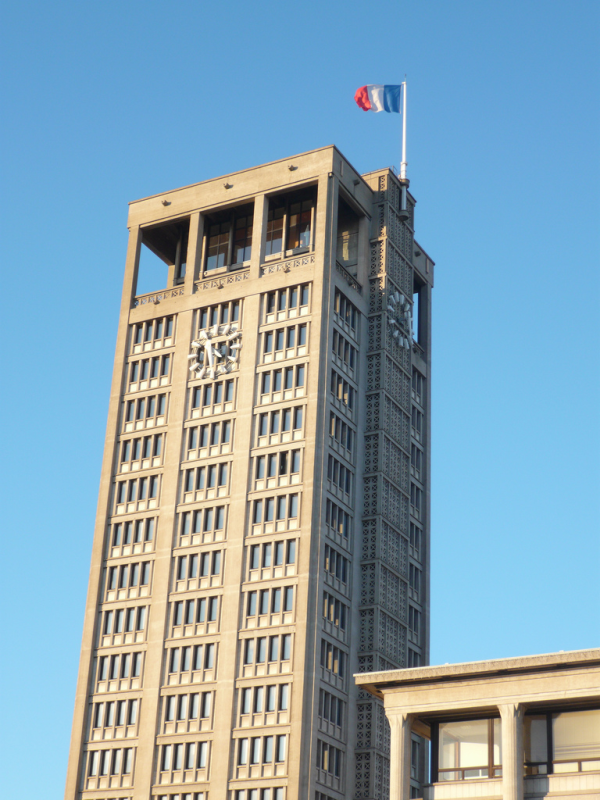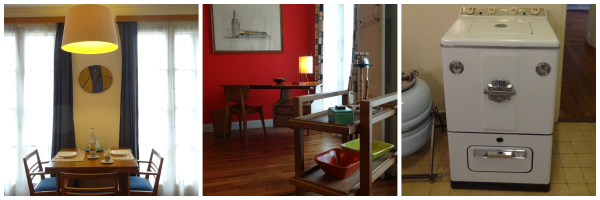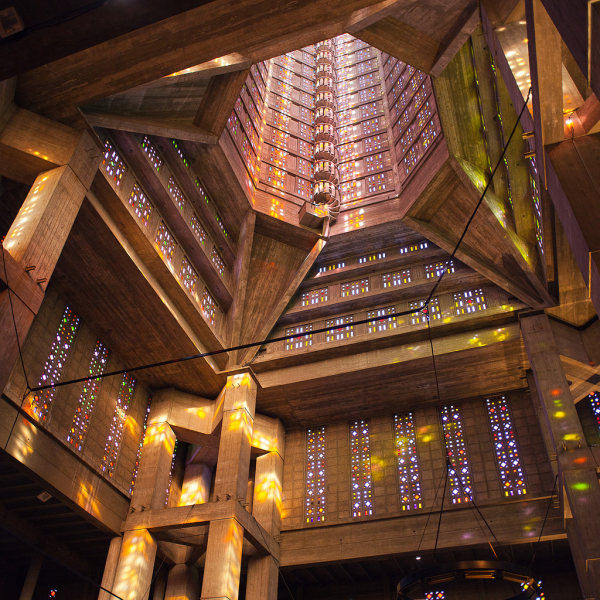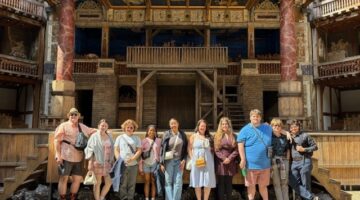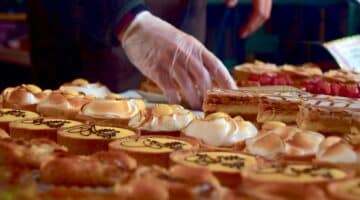Le Havre: A City Centre Unlike Any Other Town in France
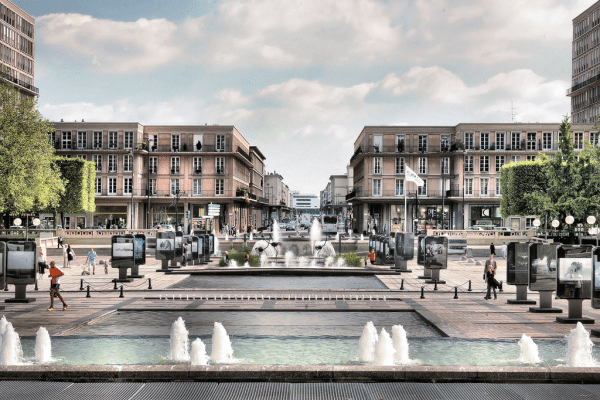
Last month I spent a couple of weeks touring Normandy, a region in northwest France synonymous with the D-Day landings and the liberation of Europe in WWII. Like many tourists, I spent a good deal of time visiting the many fascinating museums that tell the stories of incredible heroism and tragedy from this chapter in history. Unlike most visitors however, I made a stop at the city of Le Havre, today, France’s second largest port city.
During WWII, the Germans had strategically occupied this city; sitting on the English Channel at the mouth of the Seine river they had built a fortress here and made it their naval base. It was from here that they planned to invade the British Isles. The Allies arrived on the Normandy shores on 6th June 1944 but it wasn’t until the 12th September before they succeeded in liberating Le Havre. The Allied assault here began on 5th September with an attack from the air; 132 bombs were dropped, thousands of French civilians were killed and wounded, 12,500 buildings were destroyed and 150 hectres of land were razed to the ground.
The cost of liberation in Le Havre was one of the dearest paid by any town or city in France. Following the war an immense clean-up took place and plans to rebuild the city. The then 70-year-old Auguste Perret was appointed chief architect for Le Havre’s redesign. Perret practiced a modernist style of architecture and was an early pioneer of using reinforced concrete as a building material. His work was a far cry from the classical ornate 19th century architecture that you think of lining the streets of most French towns. In 1945, in the aftermath of such tragedy, Perret was granted something that was merely a dream for almost every other architect working in France; the opportunity to design a city space virtually from scratch.
The result is a model of modern urban planning and in 2005 Le Havre’s city centre was recognised as a UNESCO world heritage site. This is a city centre unlike any other you will find in France, the roads are immensely wide, designed with motorised vehicles and tramways in mind. Similar to other French towns, there is homogeneity and harmony to the buildings, only here, the style is modernist and they are made out of reinforced concrete. Solid, angular, masculine, uniform, light brown buildings line the streets; if you didn’t know where you were, you could be forgiven for thinking that you were in a former Communist city in Eastern Europe. Just like such cities, at times you feel dwarfed by your surroundings.
People’s reaction to the city is most often one of love or hate. I decided to sit on the fence but I was turned after a visit to an unusual museum. In the heart of the city centre you can visit the interior of an apartment in one of Perret’s signature buildings that has been painstakingly restored and decorated to what it might have looked soon after it was built. The wallpaper, furniture, kitchen appliances, plants and even the coats hanging up in the wardrobe are authentic and make you feel that you are stepping back in time to the 1950s. This was when I really appreciated the genius of Perret. I hadn’t imagined how light and airy the buildings might feel; quite unusual for city centre living.

Last month I spent a couple of weeks touring Normandy, a region in northwest France synonymous with the D-Day landings and the liberation of Europe in WWII. Like many tourists, I spent a good deal of time visiting the many fascinating museums that tell the stories of incredible heroism and tragedy from this chapter in history. Unlike most visitors however, I made a stop at the city of Le Havre, today, France’s second largest port city.
During WWII, the Germans had strategically occupied this city; sitting on the English Channel at the mouth of the Seine river they had built a fortress here and made it their naval base. It was from here that they planned to invade the British Isles. The Allies arrived on the Normandy shores on 6th June 1944 but it wasn’t until the 12th September before they succeeded in liberating Le Havre. The Allied assault here began on 5th September with an attack from the air; 132 bombs were dropped, thousands of French civilians were killed and wounded, 12,500 buildings were destroyed and 150 hectres of land were razed to the ground.
The cost of liberation in Le Havre was one of the dearest paid by any town or city in France. Following the war an immense clean-up took place and plans to rebuild the city. The then 70-year-old Auguste Perret was appointed chief architect for Le Havre’s redesign. Perret practiced a modernist style of architecture and was an early pioneer of using reinforced concrete as a building material. His work was a far cry from the classical ornate 19th century architecture that you think of lining the streets of most French towns. In 1945, in the aftermath of such tragedy, Perret was granted something that was merely a dream for almost every other architect working in France; the opportunity to design a city space virtually from scratch.
The result is a model of modern urban planning and in 2005 Le Havre’s city centre was recognised as a UNESCO world heritage site. This is a city centre unlike any other you will find in France, the roads are immensely wide, designed with motorised vehicles and tramways in mind. Similar to other French towns, there is homogeneity and harmony to the buildings, only here, the style is modernist and they are made out of reinforced concrete. Solid, angular, masculine, uniform, light brown buildings line the streets; if you didn’t know where you were, you could be forgiven for thinking that you were in a former Communist city in Eastern Europe. Just like such cities, at times you feel dwarfed by your surroundings.

People’s reaction to the city is most often one of love or hate. I decided to sit on the fence but I was turned after a visit to an unusual museum. In the heart of the city centre you can visit the interior of an apartment in one of Perret’s signature buildings that has been painstakingly restored and decorated to what it might have looked soon after it was built. The wallpaper, furniture, kitchen appliances, plants and even the coats hanging up in the wardrobe are authentic and make you feel that you are stepping back in time to the 1950s. This was when I really appreciated the genius of Perret. I hadn’t imagined how light and airy the buildings might feel; quite unusual for city centre living.
For those in my group who were still unconvinced by this brand of design, our visit to one of Perret’s masterpieces, the church of St Joseph, did finally make them gaze in wonder. The church can be easily spotted from almost anywhere in the city and perhaps appears most dramatically to visitors who arrive by sea; the grey concrete steeple towers a whopping 107 metres high and dominates the skyline.
The exterior is stark and sombre but when you enter the church, the experience is quite the opposite. Thousands of panes of coloured glass light up the concrete interior in ever changing hues depending on the time of day and the light outside. The result creates the feel of the warmth of a burning fire in the otherwise cold interior. St Joseph’s was dedicated to the memory of the civilian victims of the war and today is an emblem of the rebuilding of Europe and is a 20th century masterpiece.
[Photo credits: lumer-photo-passion-83, BBPANTONE, Amblipyge
For those in my group who were still unconvinced by this brand of design, our visit to one of Perret’s masterpieces, the church of St Joseph, did finally make them gaze in wonder. The church can be easily spotted from almost anywhere in the city and perhaps appears most dramatically to visitors who arrive by sea; the grey concrete steeple towers a whopping 107 metres high and dominates the skyline.
The exterior is stark and sombre but when you enter the church, the experience is quite the opposite. Thousands of panes of coloured glass light up the concrete interior in ever changing hues depending on the time of day and the light outside. The result creates the feel of the warmth of a burning fire in the otherwise cold interior. St Joseph’s was dedicated to the memory of the civilian victims of the war and today is an emblem of the rebuilding of Europe and is a 20th century masterpiece.
[Photo credits: lumer-photo-passion-83, BBPANTONE, Amblipyge]

